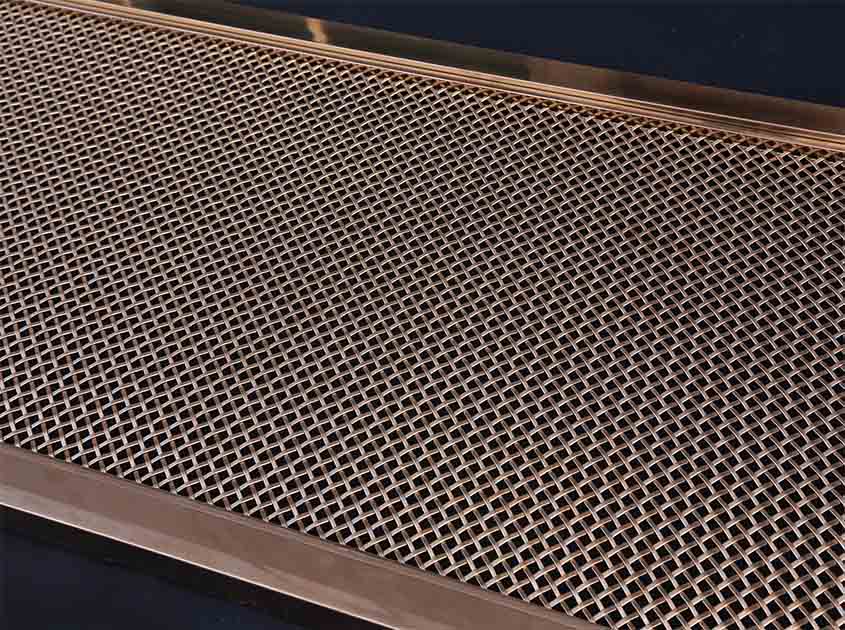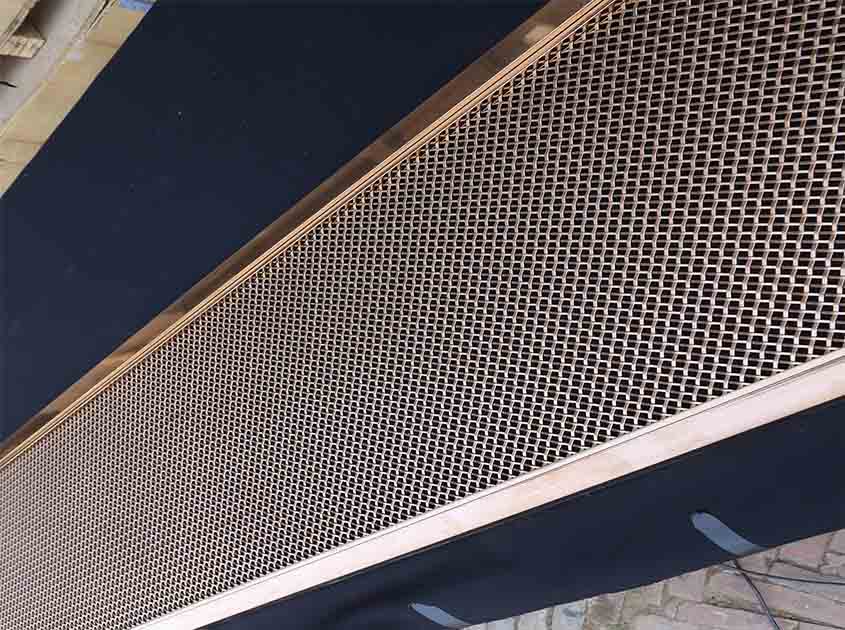Introduction:
In the quest for innovative and visually striking architectural solutions, architectural woven mesh has emerged as a versatile material that plays a significant role in enhancing the design and functionality of cultural and civic buildings. In this article, we will explore the multifaceted role of architectural woven mesh in cultural and civic buildings, highlighting its contributions to aesthetics, functionality, sustainability, and community engagement.

Aesthetic Enhancements:
Architectural woven mesh adds a unique aesthetic dimension to cultural and civic buildings, transforming them into visually captivating structures. The interplay of light and shadow on the mesh surface creates a dynamic and ever-changing façade, enhancing the building's architectural character. The intricate patterns and textures of the mesh provide an opportunity for creative expression, allowing architects to incorporate artistic elements that reflect the building's purpose and cultural significance. Whether used as façade cladding, screening elements, or interior partitions, architectural woven mesh elevates the visual appeal of cultural and civic buildings, making them stand out as architectural masterpieces.

Functionality and Flexibility:
Beyond its visual impact, architectural woven mesh offers practical benefits and flexibility in the design of cultural and civic buildings. The mesh can serve as a shading device, regulating natural light and solar heat gain, thereby improving energy efficiency and occupant comfort. It can be used to create visual barriers, spatial pisions, and acoustic panels, enhancing functionality and creating adaptable spaces that can be reconfigured to meet evolving needs. The flexibility of architectural woven mesh allows architects to strike a balance between openness and privacy, creating immersive and engaging environments for cultural events, exhibitions, and community gatherings.

Sustainability:
Cultural and civic buildings are increasingly embracing sustainable design practices, and architectural woven mesh contributes to this ethos. The material is often made from durable and recyclable materials such as stainless steel or aluminum, reducing the environmental impact associated with construction. The lightweight nature of the mesh minimizes structural loads and reduces the need for additional support systems. Additionally, the mesh's semi-transparent properties allow for natural ventilation, reducing the reliance on mechanical systems and enhancing energy efficiency. By integrating architectural woven mesh, cultural and civic buildings can exemplify sustainable design principles, demonstrating a commitment to environmental responsibility.

Community Engagement:
Cultural and civic buildings are integral to community identity and social cohesion. Architectural woven mesh offers opportunities for community engagement by creating interactive and participatory spaces. The mesh can be used as a canvas for public art installations, projection screens for multimedia displays, or even as an interactive façade that responds to the surrounding environment. By involving the community in the design and use of architectural woven mesh, cultural and civic buildings become more than just physical structures—they become spaces that foster a sense of belonging, pride, and cultural expression.

Conclusion:
Architectural woven mesh plays a vital role in enhancing the aesthetics, functionality, sustainability, and community engagement of cultural and civic buildings. Its ability to create visually captivating facades, provide flexibility in design, contribute to sustainability goals, and foster community interaction makes it an invaluable material for architects and designers. By incorporating architectural woven mesh, cultural and civic buildings become vibrant and dynamic spaces that inspire, engage, and connect communities, serving as symbols of cultural heritage and catalysts for social change.
pre:Architectural Woven Mesh: A Solution for Artistic Ceiling Installations
next:Architectural Woven Mesh: Creating Dynamic Exterior Canopies
© 2025 Joinwin Architectural Wire. All Rights Reserved. | Sitemap
Recommended Read
Unique architectural metal decorative mesh adds charm to your project
Architectural woven mesh is a type of material that is widely used in exterior and interior design.